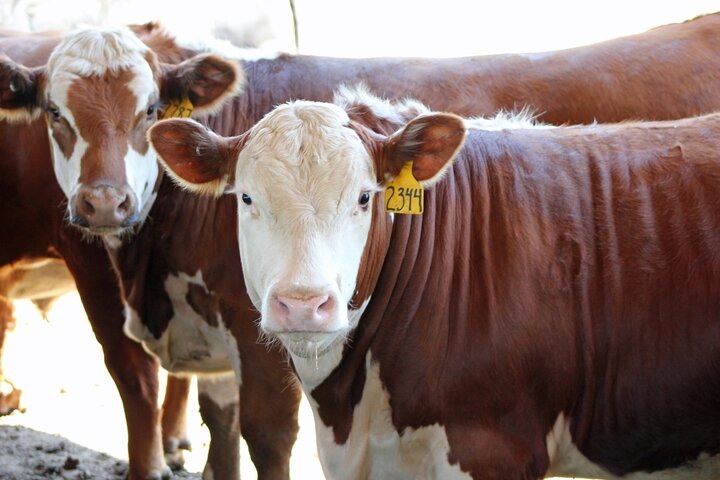Two statements commonly spoken by market analysts and producers are: 1) beef is a differentiated product and 2) global beef supply impacts domestic prices. These are so frequently quoted that we might forget how these two statements imply modifications in local risk management and production practices. So, how do these statements apply to a hypothetical Foot and Mouth Disease (FMD) situation in the United States (US)?
FMD Implications for US Beef Supply
Let’s tackle these problems jointly. In this case beef differentiation comes in two forms. First, after a FMD outbreak beef in the US would be classified as “FMD-endemic” whereas other countries where FMD is not found would remain “FMD-free”. This classification for US beef implies exports could only go to places that are also classified as “FMD-endemic” bypassing the current most profitable markets of Japan, South Korea, Mexico, and Canada. Since the US is a large beef producer, the sudden increase in supply of beef on the FMD-endemic market would lower “FMD-endemic” beef prices. Further complicating the matter is US beef quality. In other words, producers would lose more since FMD-endemic countries would not be willing to pay premiums for US grain finished products, further suppressing price. Given the amount of time some countries took to remove SPS regulations placed on the US after BSE, one might suspect that the length could be similar for a hypothetical FMD incidence in the US. For example, in January 2020 China finally agreed to lift age restrictions on beef imports that were placed in 2004 after BSE occurred…16 years after the incident.
So, what would happen if there were a hypothetical FMD outbreak in the US? Agricultural economists have estimated different impacts which depend on the vaccine strategy, vaccination capacity, number of herds infected before vaccination occurs, and the vaccination range. Under a situation where the US chooses not to vaccinate, long term producer loses to capital and management would be $93 billion dollars. Under a “best case” scenario where cattle are vaccinated to live, 50 herds are vaccinated after 22 days, 10 herd infected before vaccination occurs, and a 25-mile vaccination radius, producers would still lose $33 billion dollars (Schroeder et al. 2015).
Traceability and Secure Beef Supply Plans
This leads to a very important feature of the World Trade Organization Sanitary and Phytosanitary (SPS) agreements – a principle known as regionalization. This principle states that if a foreign animal disease is found to be contained in a specific region and other regions can prove they have not been contaminated then “FMD-free regions” within a “FMD-endemic country” can continue to export beef products. The United States already applies this regionalization principle to several major beef producing countries. For example, the state of Santa Caterina in Brazil is FMD-free and can ship fresh, chilled, and frozen beef to the United States even though the US classifies Brazil, as a whole, as “FMD-endemic”. The United States thus requires beef originating from other Brazilian states to be heated prior to shipment to ensure the virus has been neutralized.
The SPS regionalization principle has strong implications and incentives for local adoption of traceability and secure beef supply plans. Under a hypothetical FMD outbreak, regions that had adopted traceability measures and secure beef supply plans would be able to quickly stamp out FMD or prove FMD-free status quicker than regions without traceability and secure beef supply plans. Pulling from an example in recent memory, the BSE incidence, we see how trade partners respond. After the incident the value of beef exports dropped $4 billion dollars. Once the US could show they were “BSE-free” and taking preventive measures countries dropped SPS measures imposed due to BSE and beef trade values gradually increased. The US did not recover to pre-2004 trade levels till 2010, 6 years after the incident. Market analysts have largely agreed that if traceability systems were in place prior to BSE, beef market recovery could have been accelerated. Thus, the damages due to FMD entering the US would likely not be equally distributed across regions/states impacting profitability, and in some cases the viability of production, in both the short and long term.
Going back to the two statements I began with, differentiated beef products and global supply impacts domestic prices, implies there are large incentives for regions/states to adopt traceability and secure beef supply plans as a production practice and risk management tool. However, the broader effectiveness of these tools will vary greatly by the adoption of these tools by neighbors.
References
Schroeder, Ted C., Dustin L. Pendell, Michael W. Sanderson, and Sara McReynolds. 2015. "Economic impact of alternative FMD emergency vaccination strategies in the midwestern United States." Journal of Agricultural and Applied Economics 47(1): 47-76.
Interviews with the authors of BeefWatch newsletter articles become available throughout the month of publication and are accessible at https://go.unl.edu/podcast.
Topics covered:
Marketing & risk management, Marketing, budgets & management

